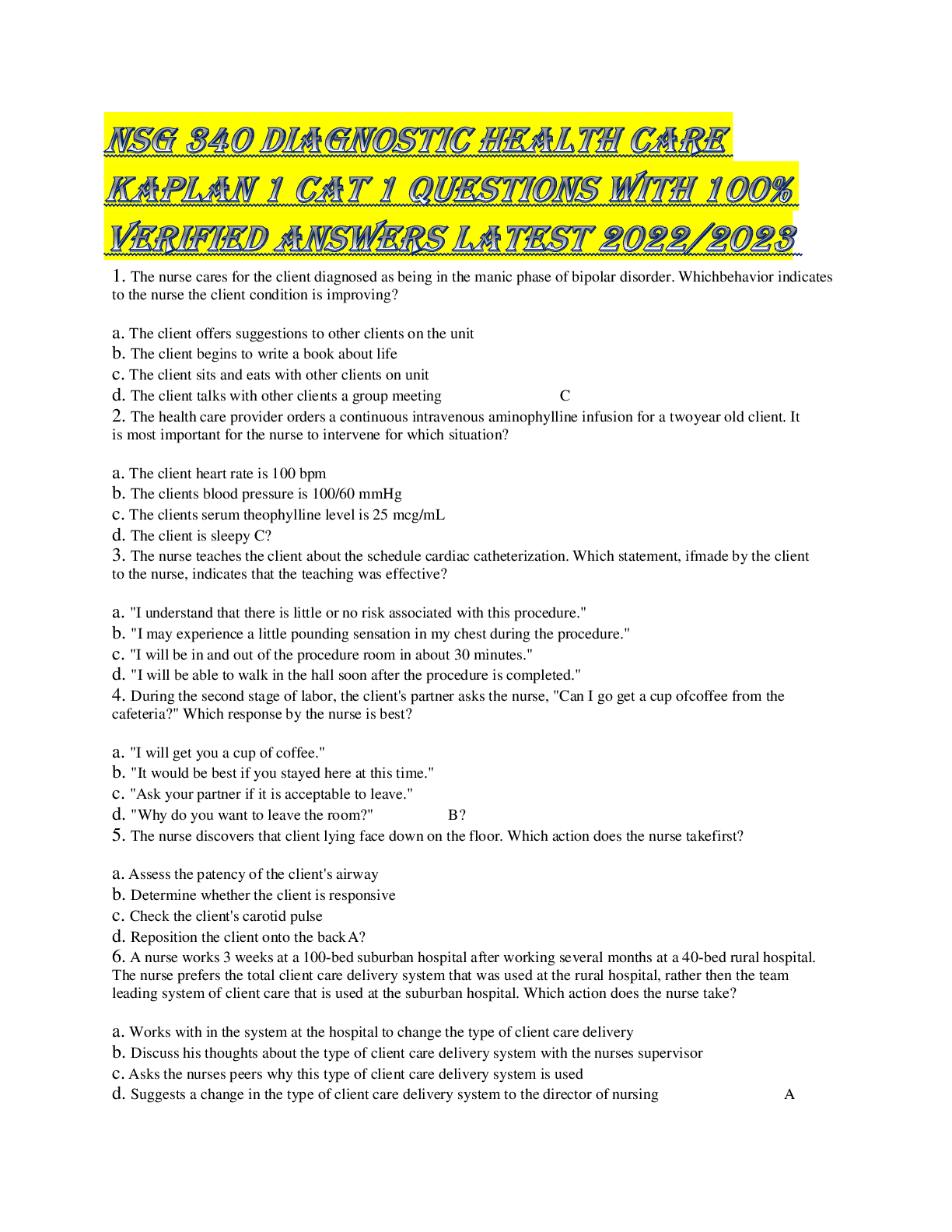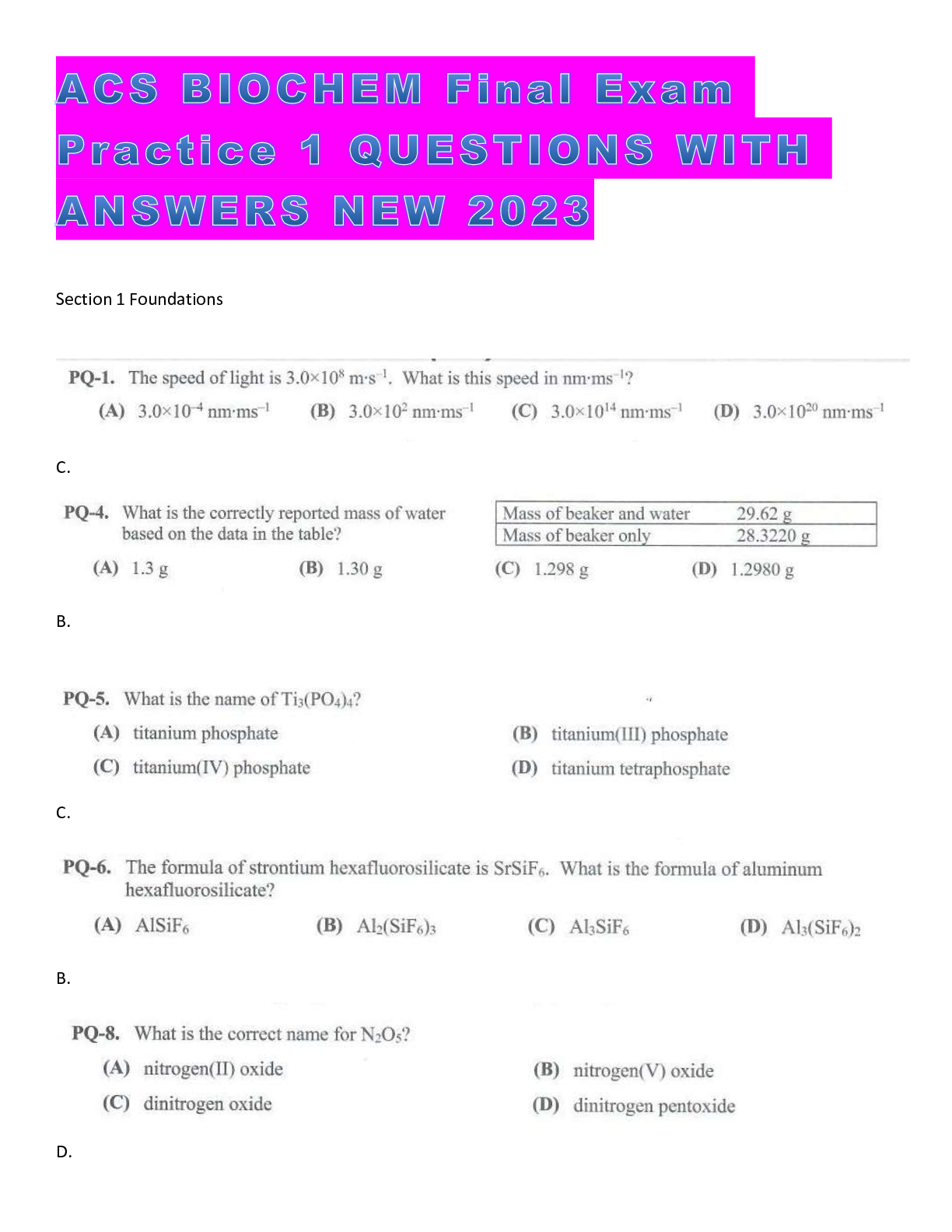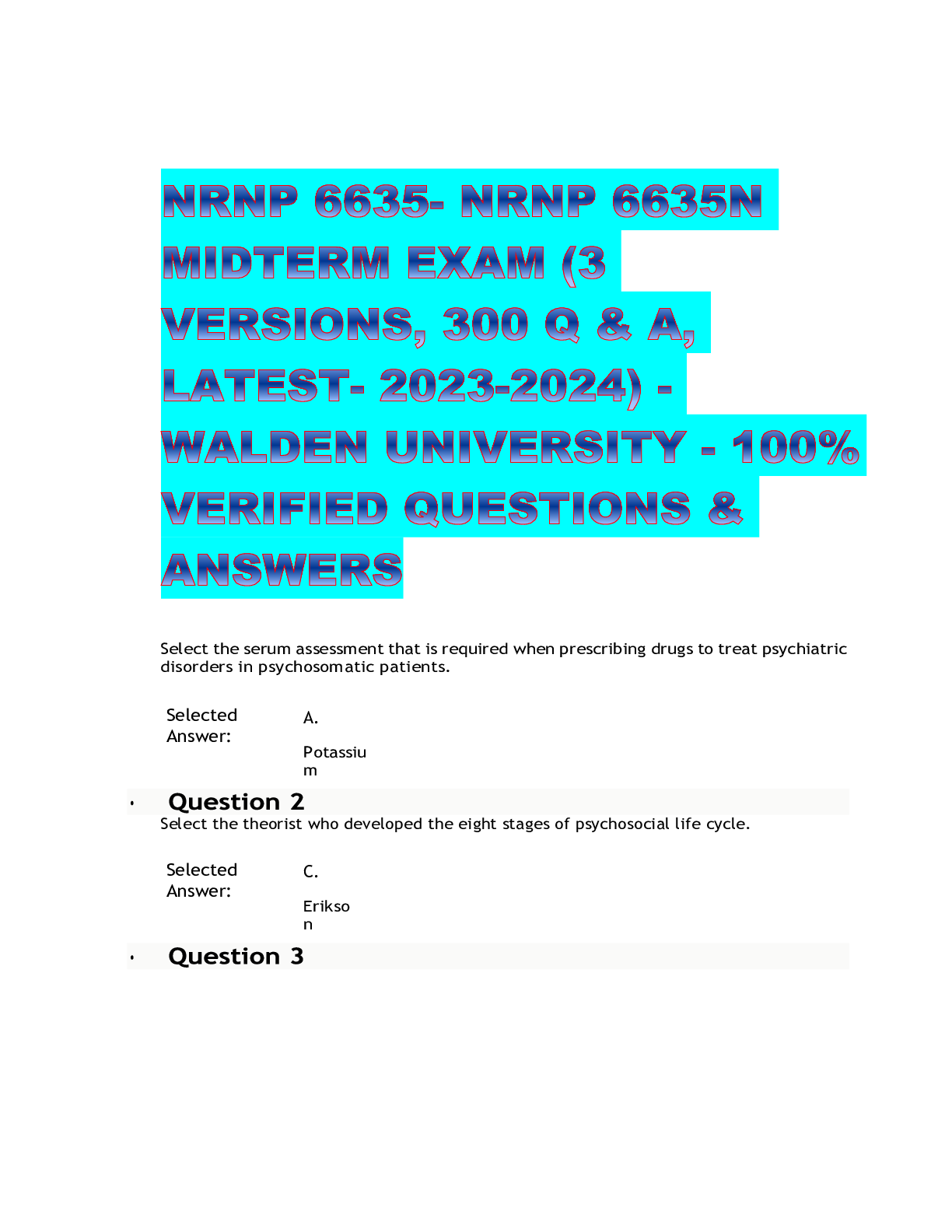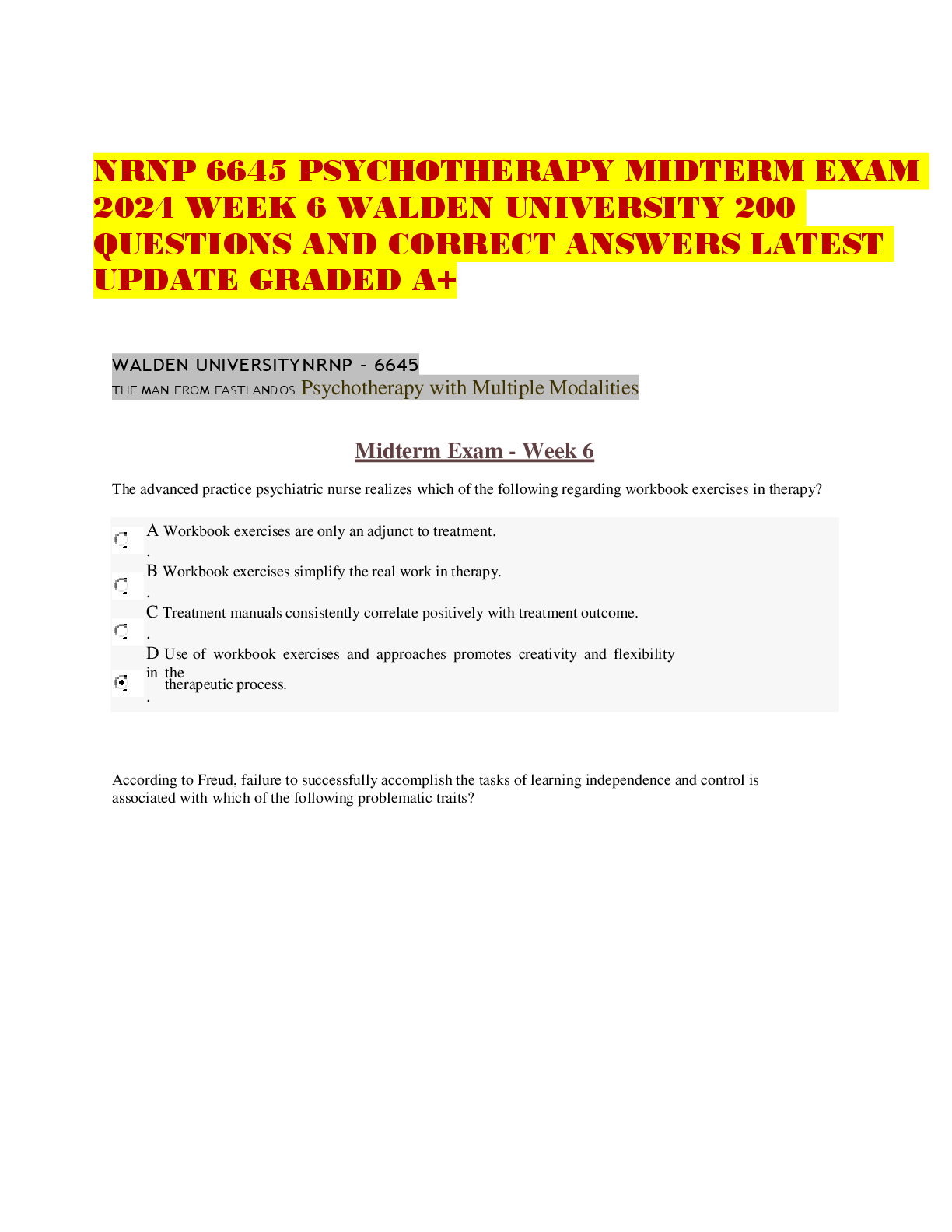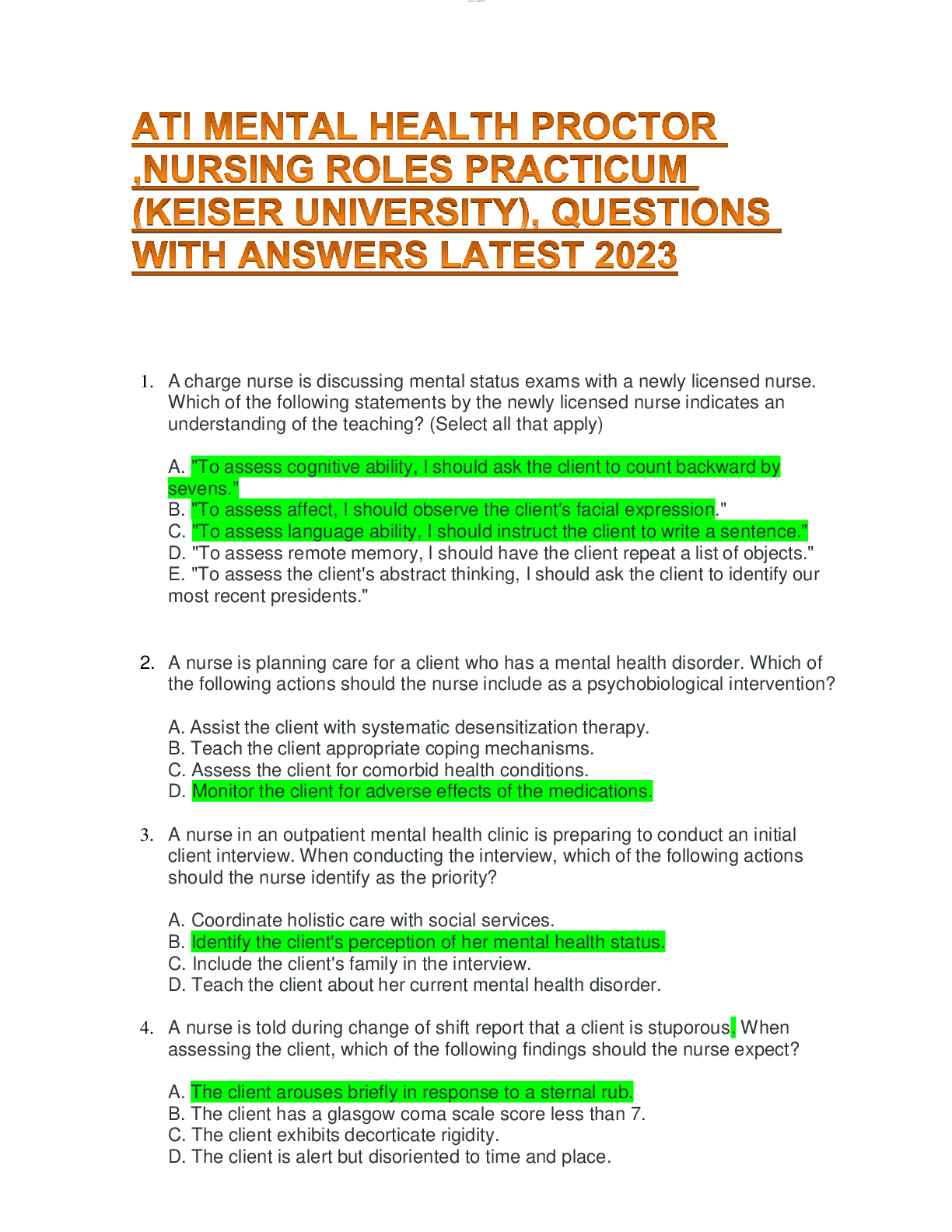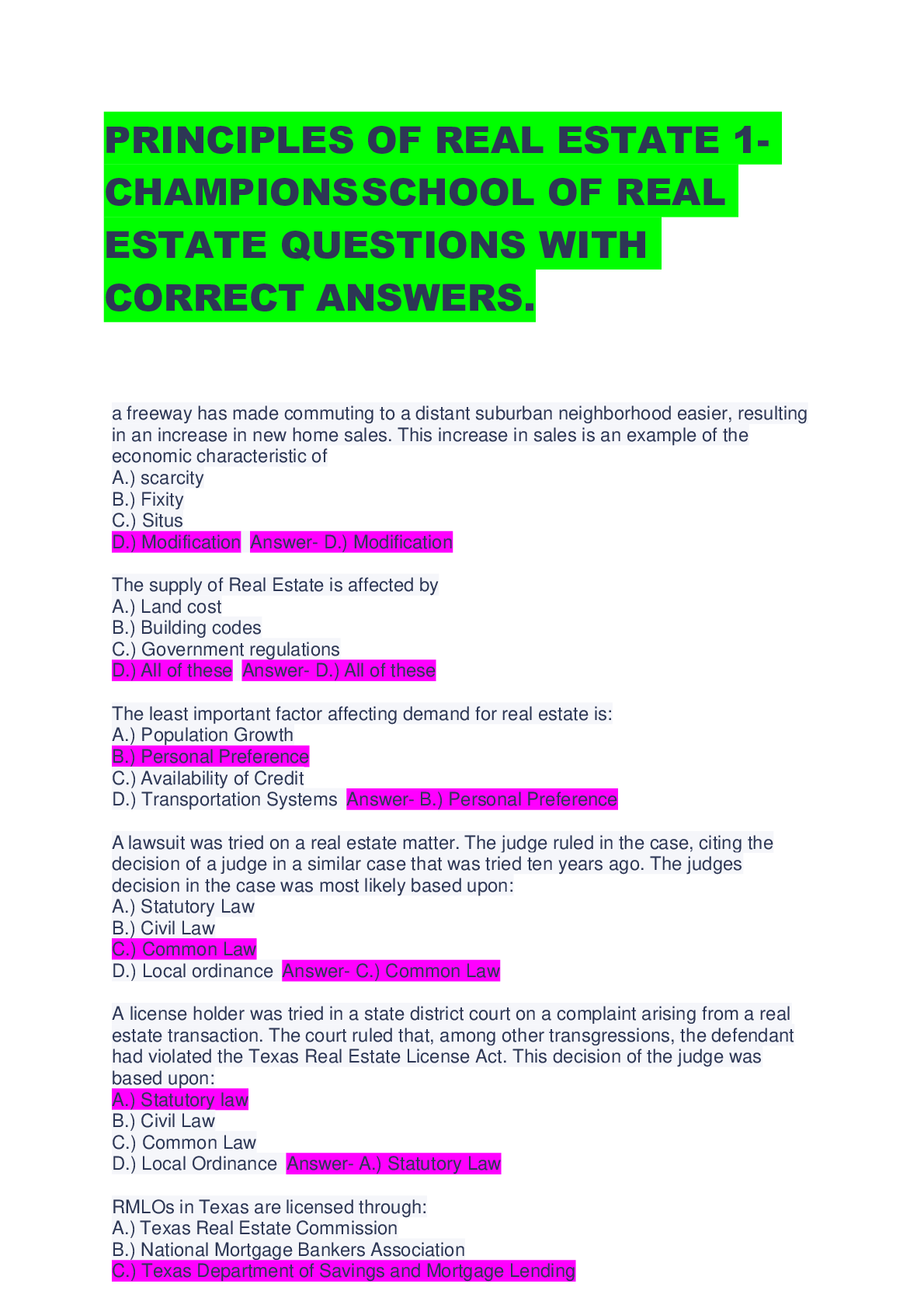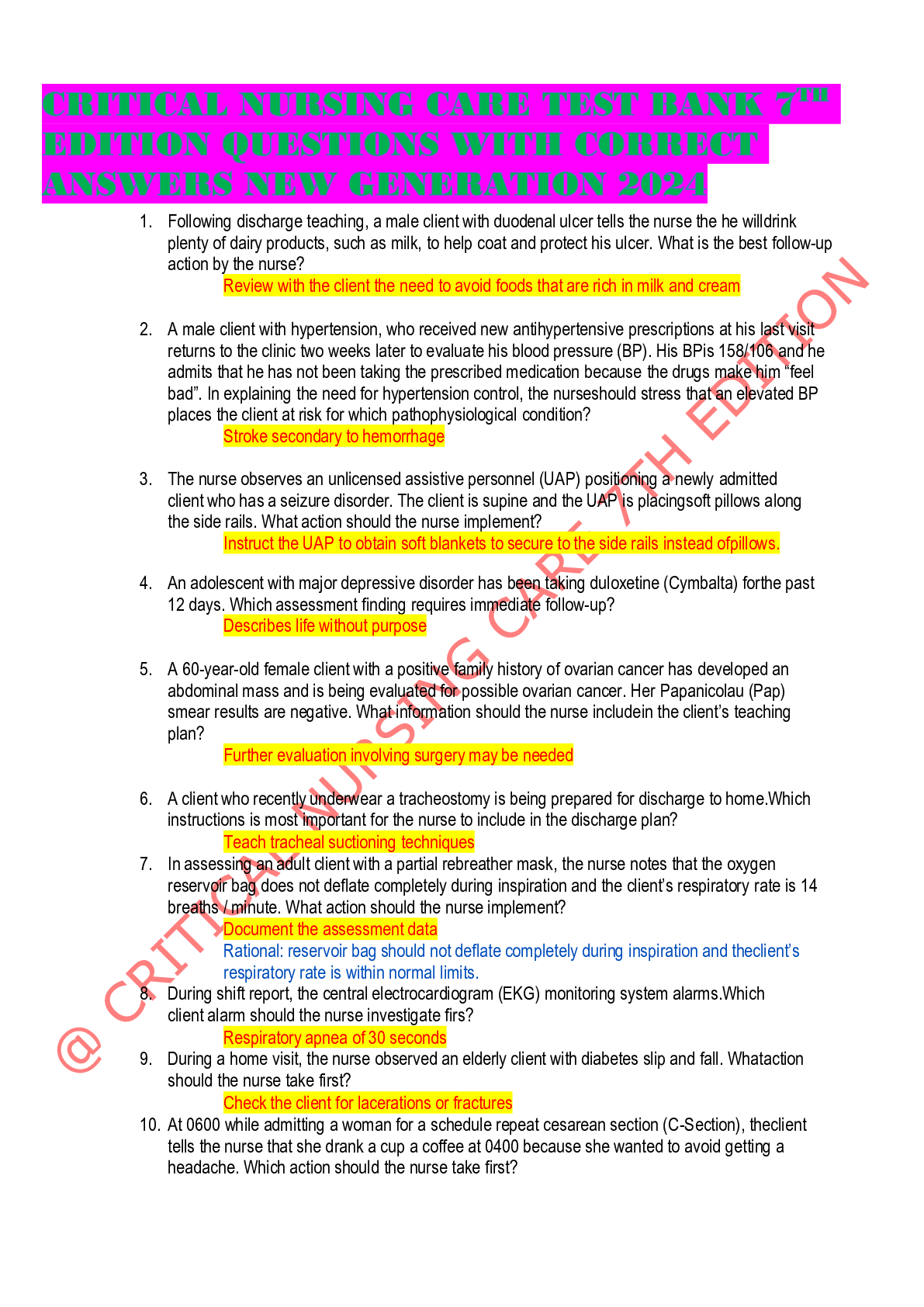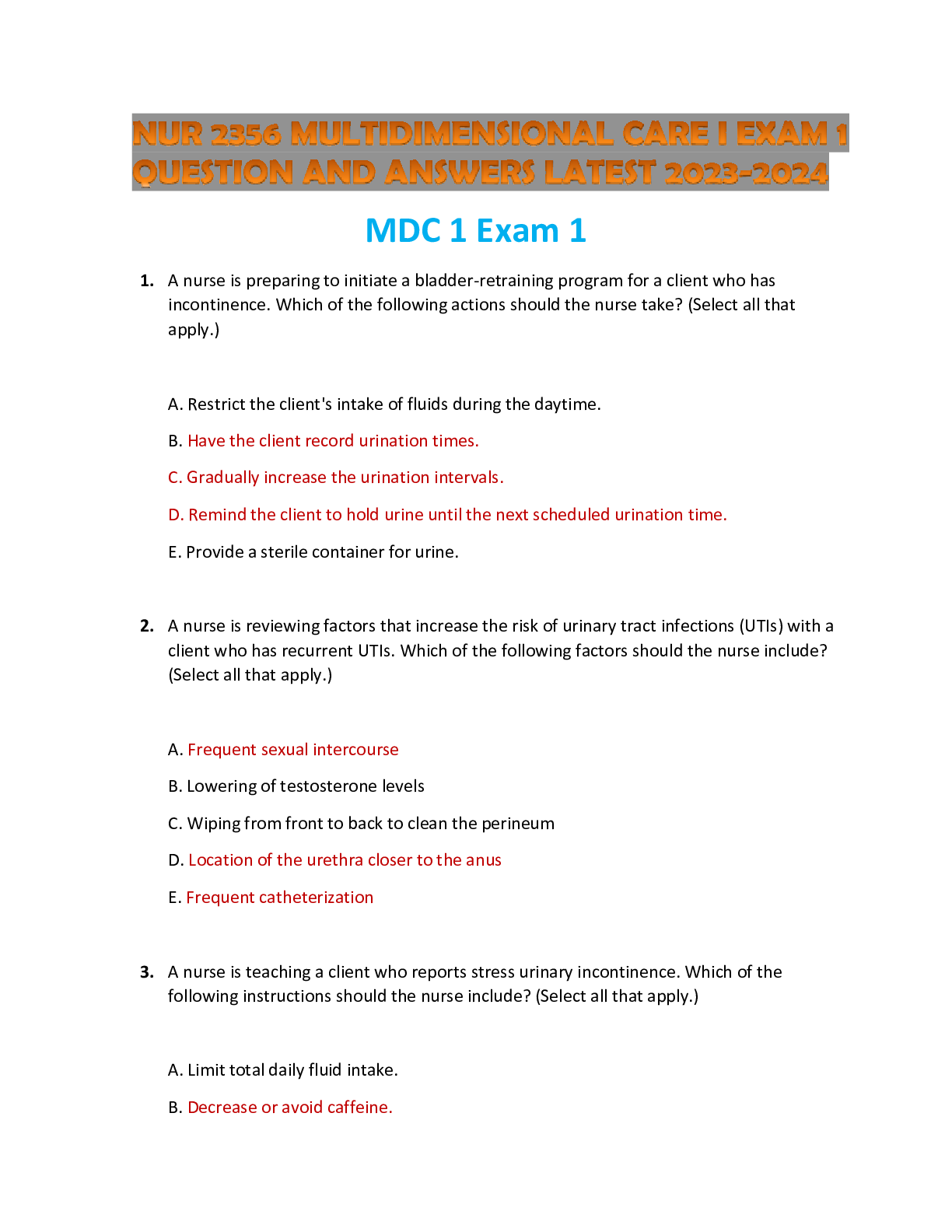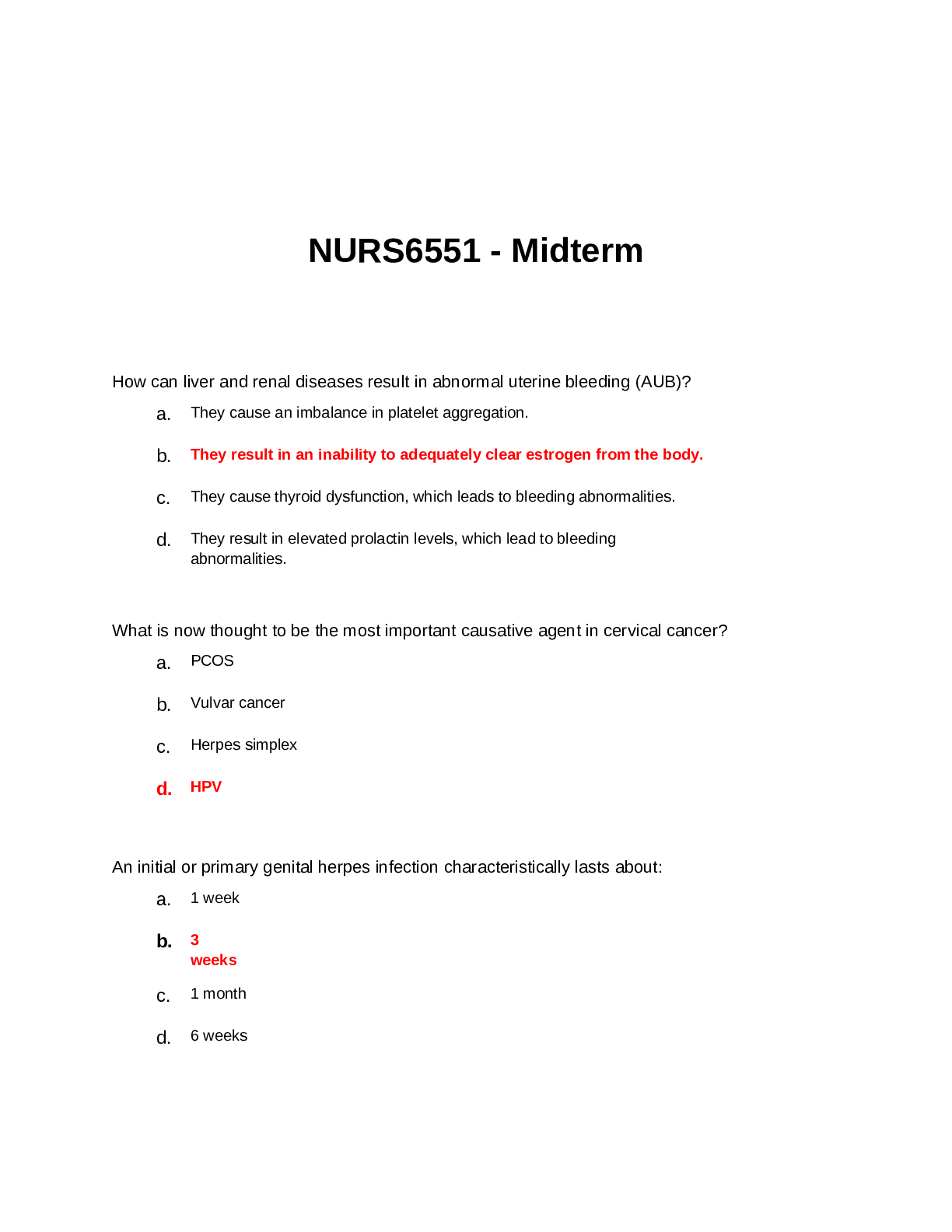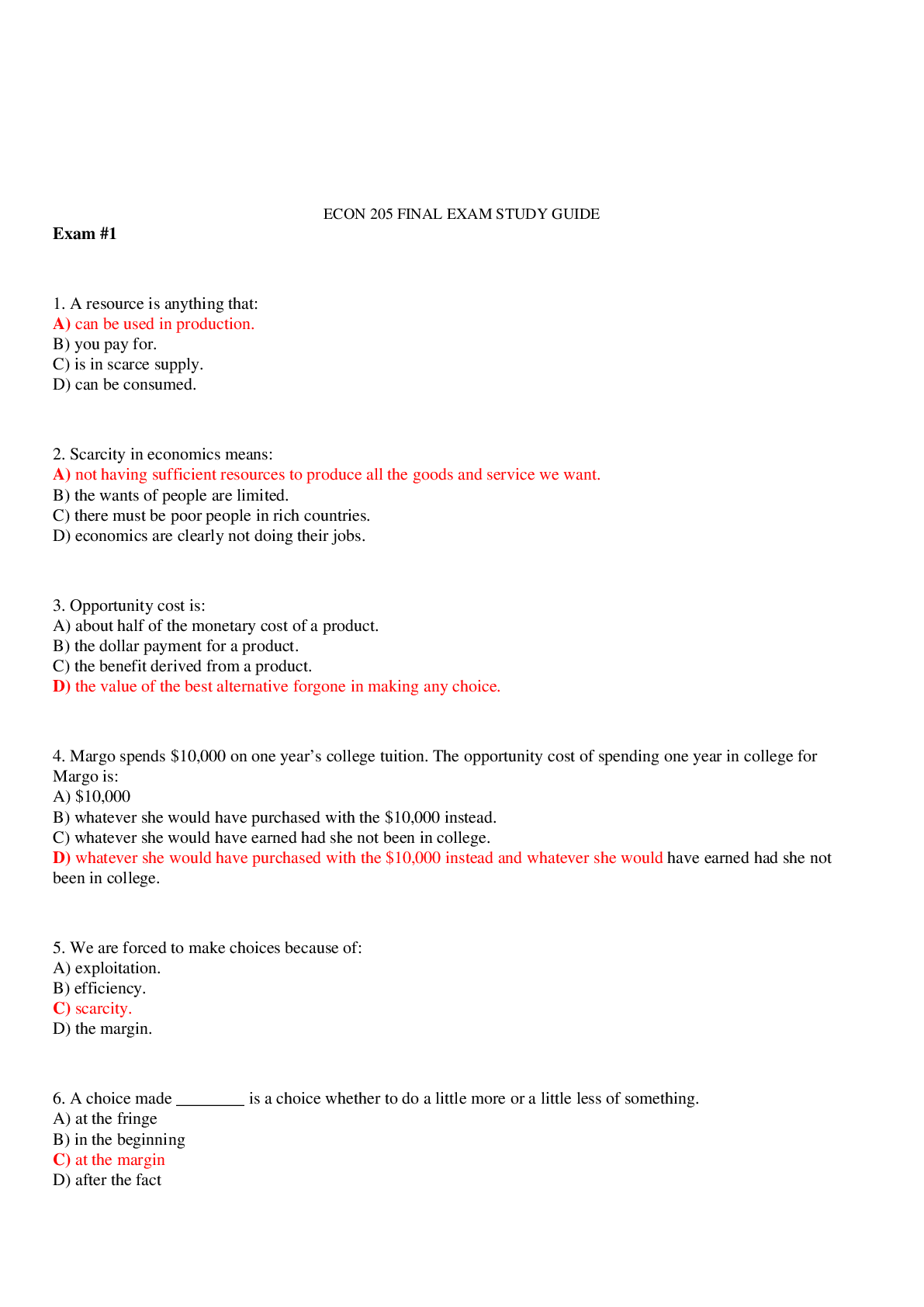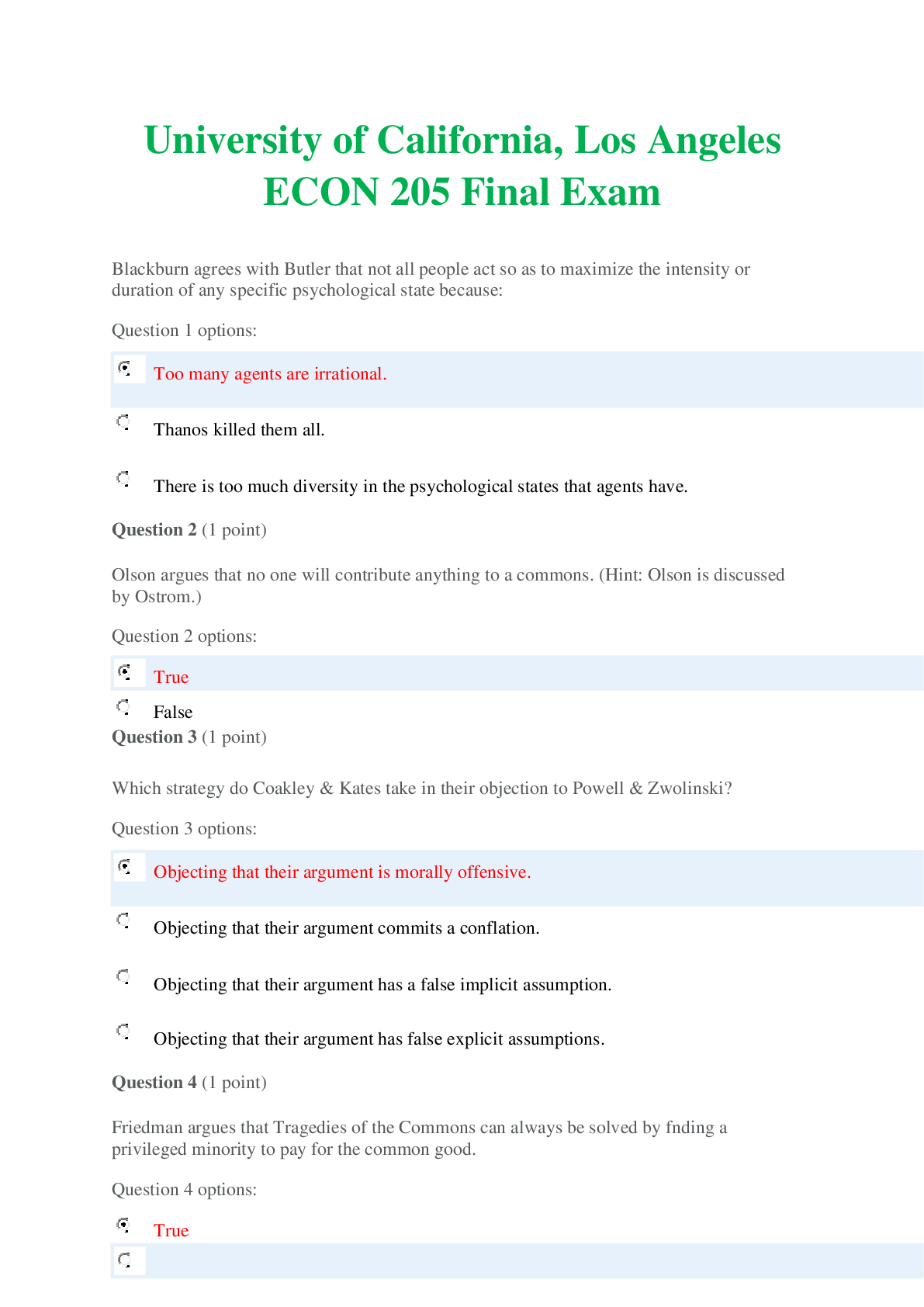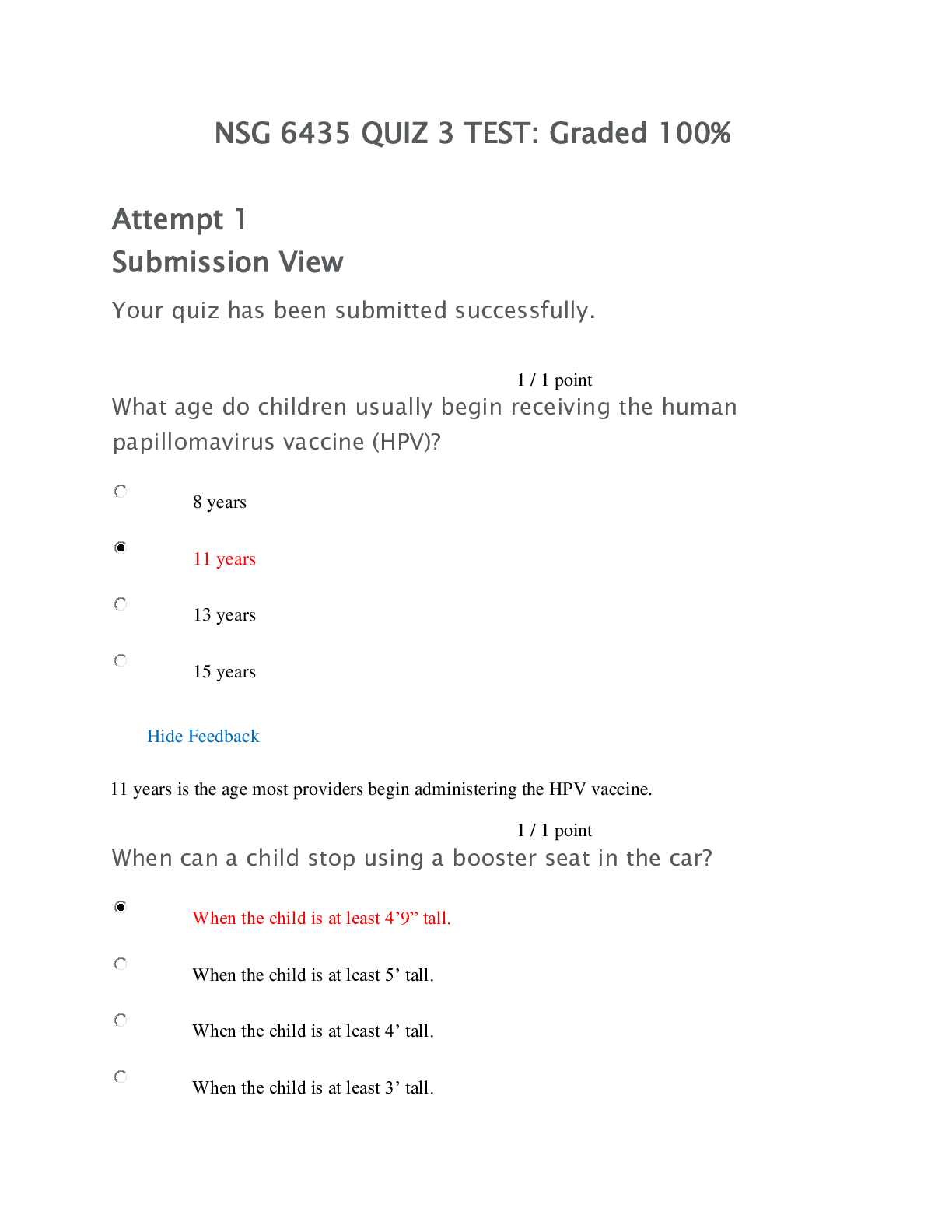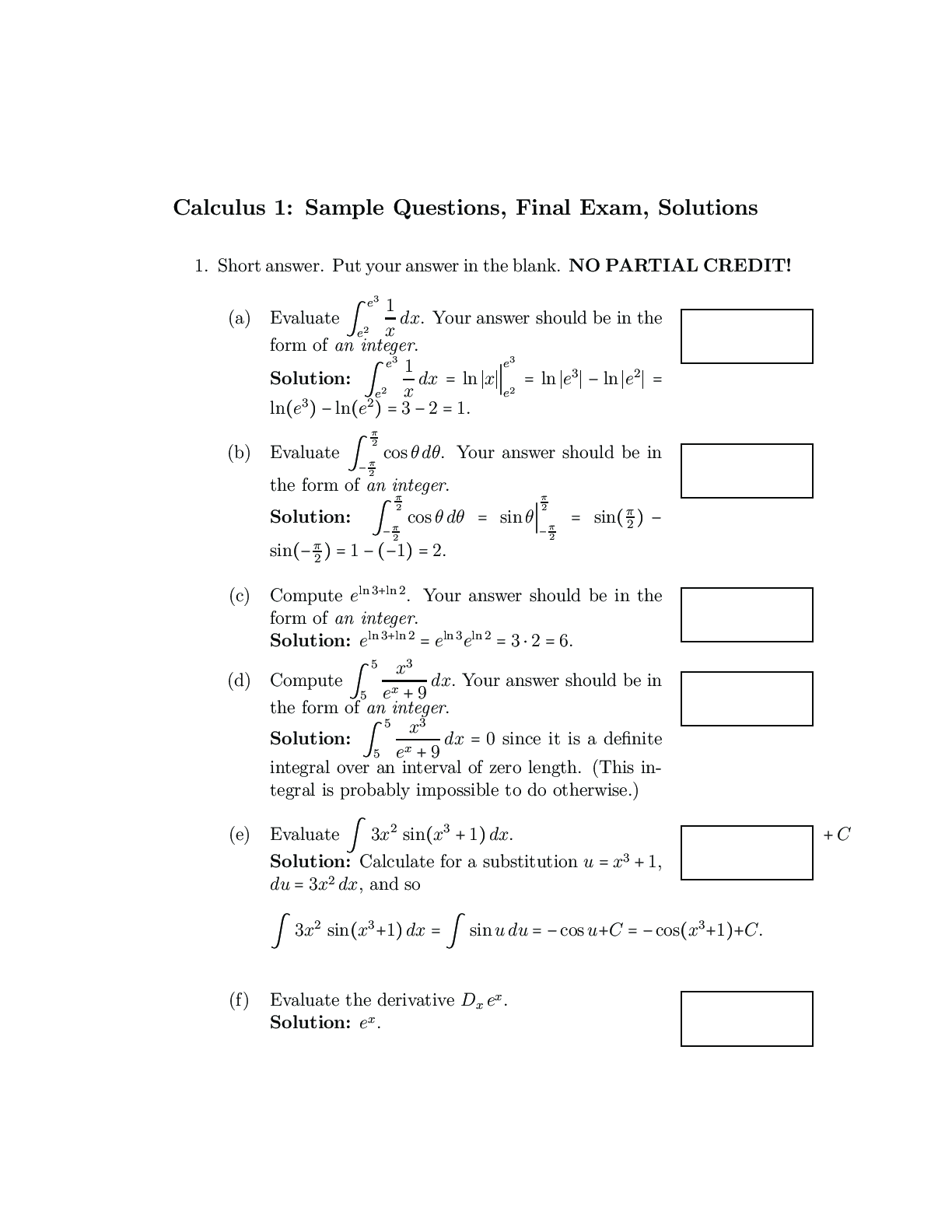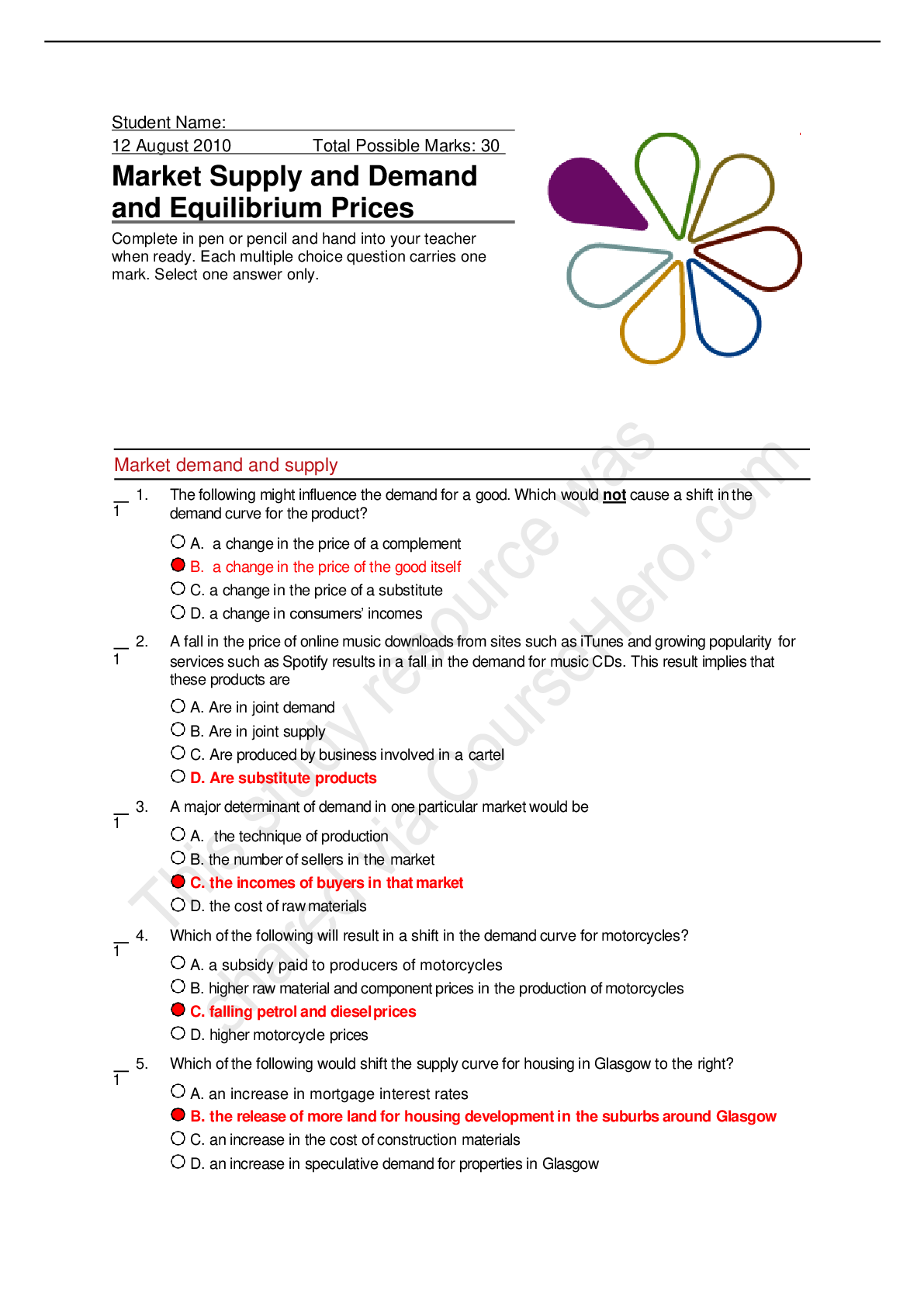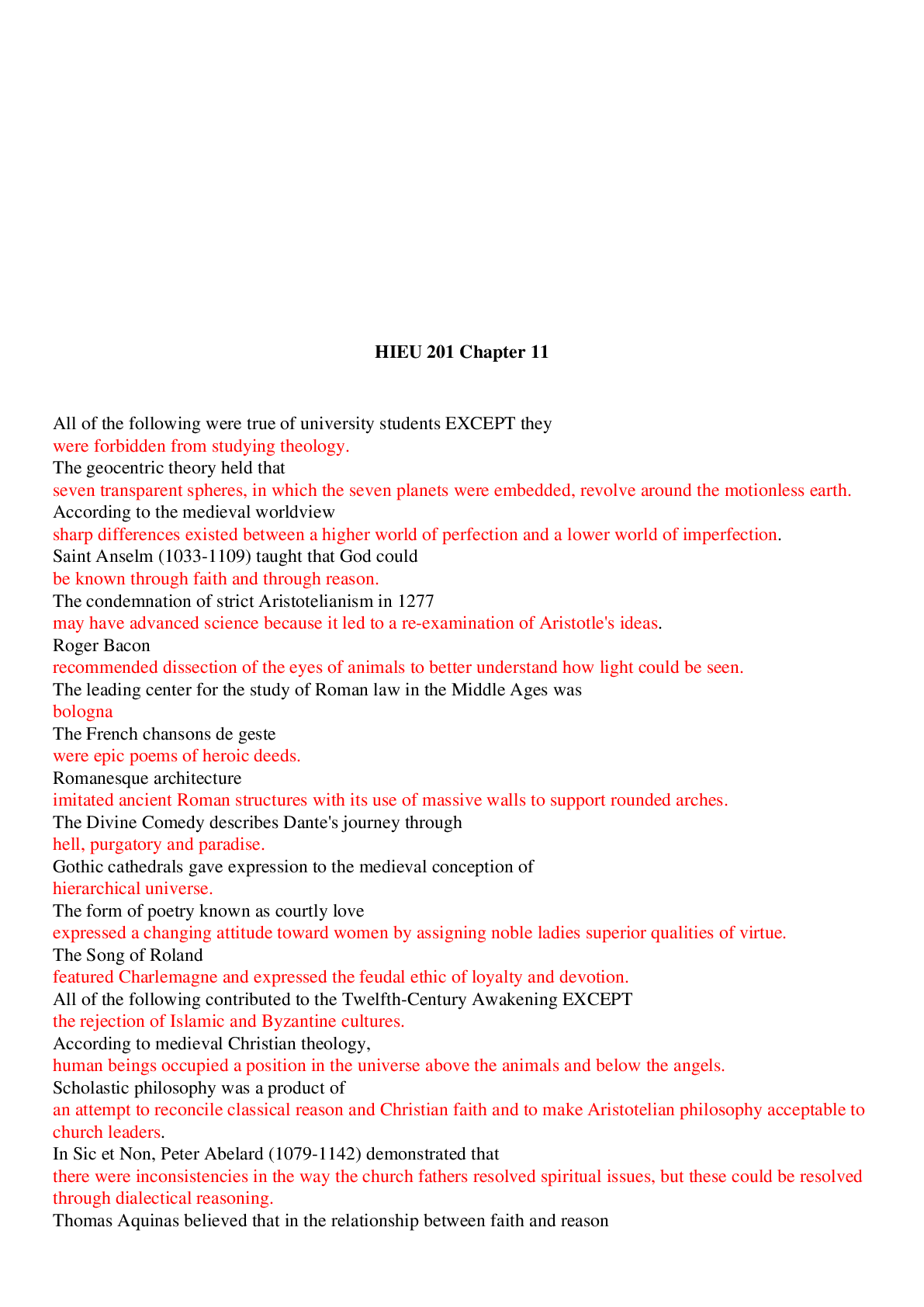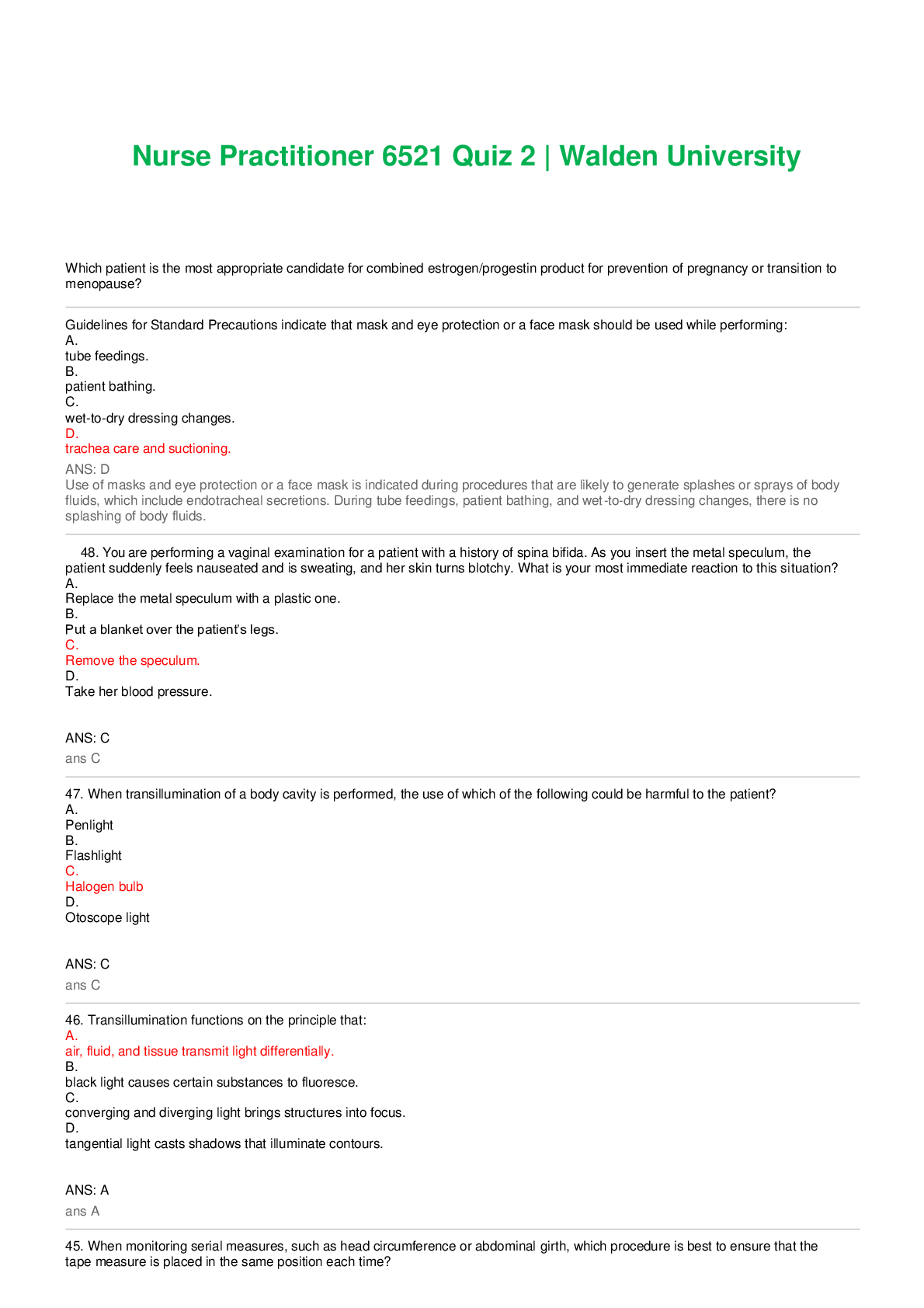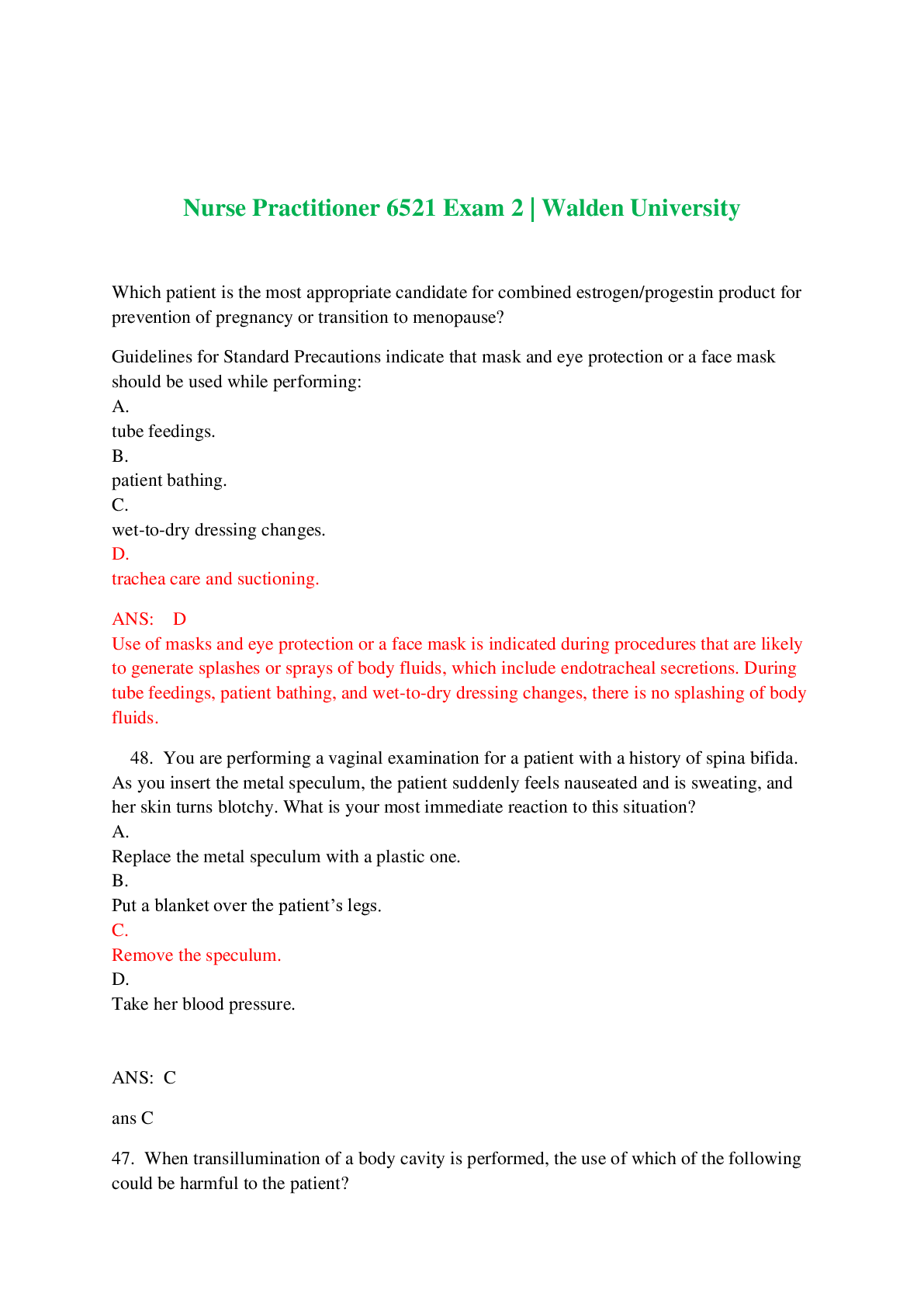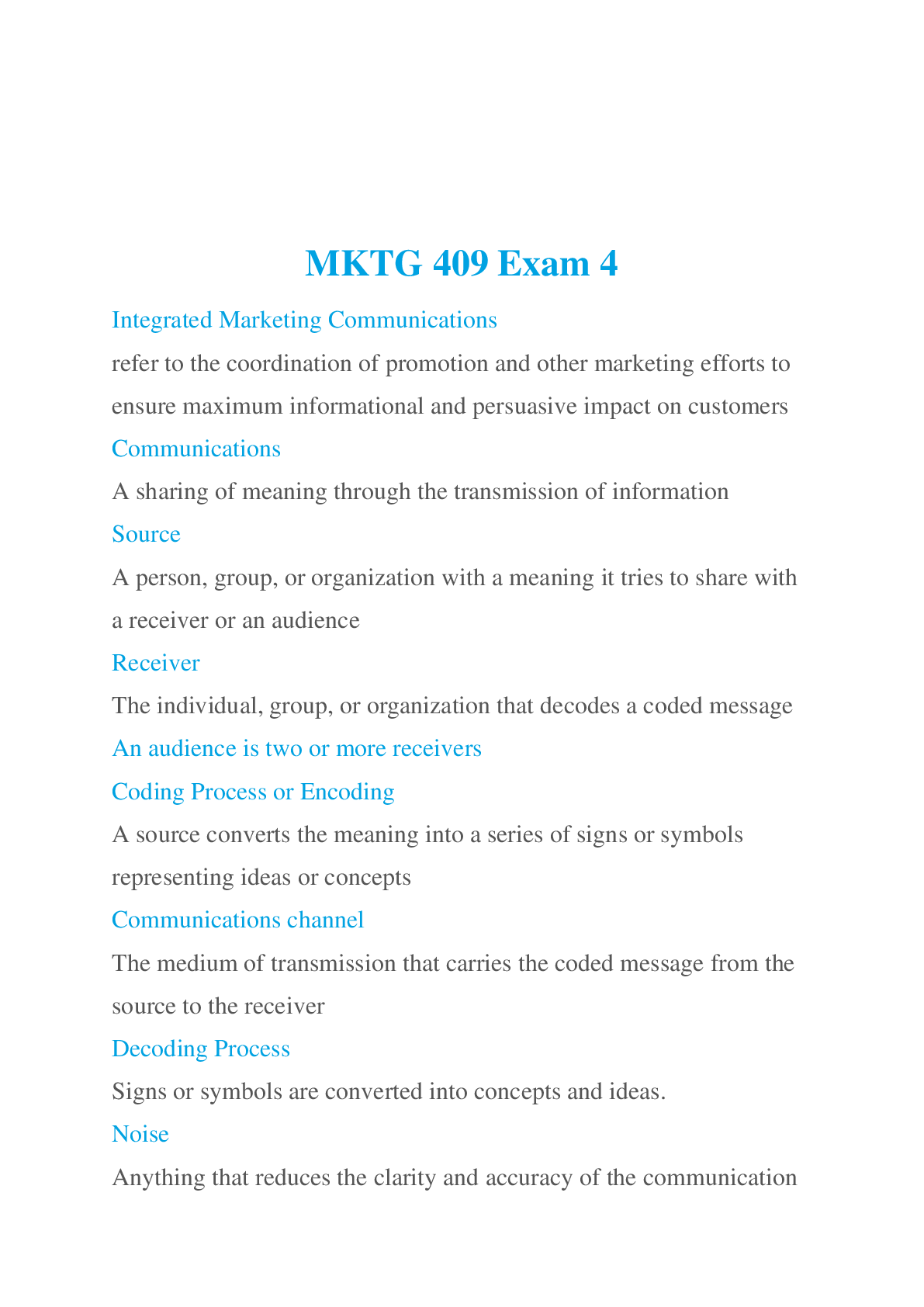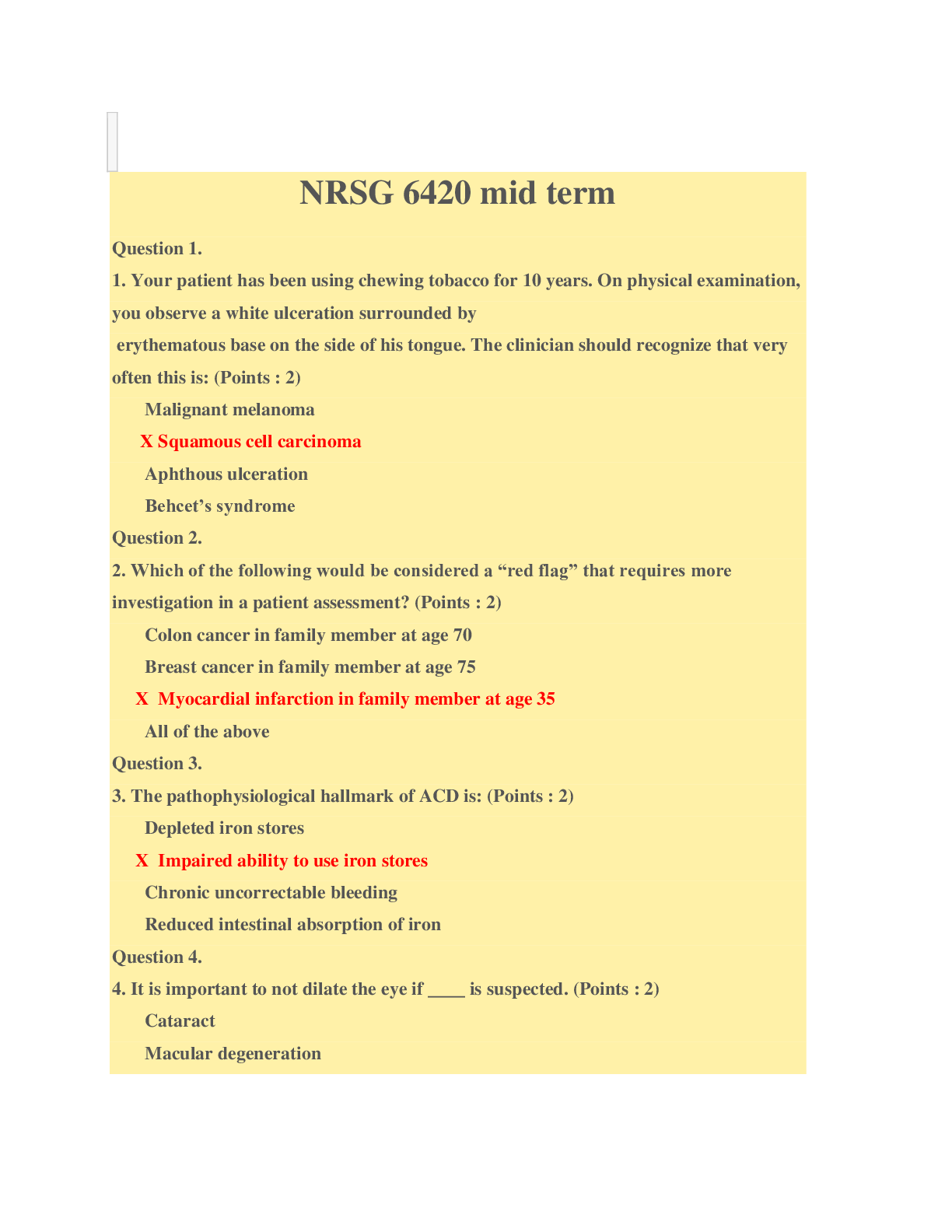ATI Maternal Newborn Proctored Exam
Document Content and Description Below
ATI Maternal Newborn Proctored Exam (Exam solutions, with updated complete resources for 2022 ATI Exams) 1. A nurse is teaching a client about Rho(D) immunoglobulin (RhoGAM). Which of the foll... owing statements by the client indicated an understanding of the teaching? a. I will receive this medication if my baby is Rh-negative b. I will receive this medication at time of delivery c. I will need a second dose of this medication when my baby is 6 weeks old d. I will need this medication if I have an amniocentesis- Recommended because of the potential of fetal RBCs entering the maternal circulation 2. A nurse is caring for a client who is to receive oxytocin (Pitocin) to augment her labor. Which of the following contraindicates the initiation of the oxytocin infusion and requires notification of the provider? a. Late decelerations- Oxytocin is contraindicated based on late decelerations noted on fetal assessment findings because they indicate uteroplacental insufficiency. b. Baseline variability c. Cessation of uterine dilation d. Prolonged active phase of labor 3. A nurse on the newborn unit is planning discharge for four clients. Which of the following will require care beyond that of a standard follow-up visit with the provider after delivery? a. A newborn being sent home after 22 hr after birth- Screening tests must be repeated if they were performed before he newborn was 24 hr. old. b. A newborn at 38 weeks of gestational age c. A newborn who is bottle feeding d. Twin newborns with Apgar scores of 8 and 9 4. A nurse is assessing a newborn who has a weak cry and is grimacing. The nurse notes the newborn has a heart rate of 102/min, blueish extremities, and a flaccid muscle tone. Which of the following reflects the appropriate APGAR score? a. 4 b. 5 c. 6 d. 7 5. A nurse is caring for a client who has a history of rheumatic disease, but no physical symptoms prior to pregnancy. The client begins to experience dyspnea, orthopnea, and pulmonary edema. Which of the following biological alterations explains this change? a. Incre [Show More]
Last updated: 2 years ago
Preview 1 out of 6 pages
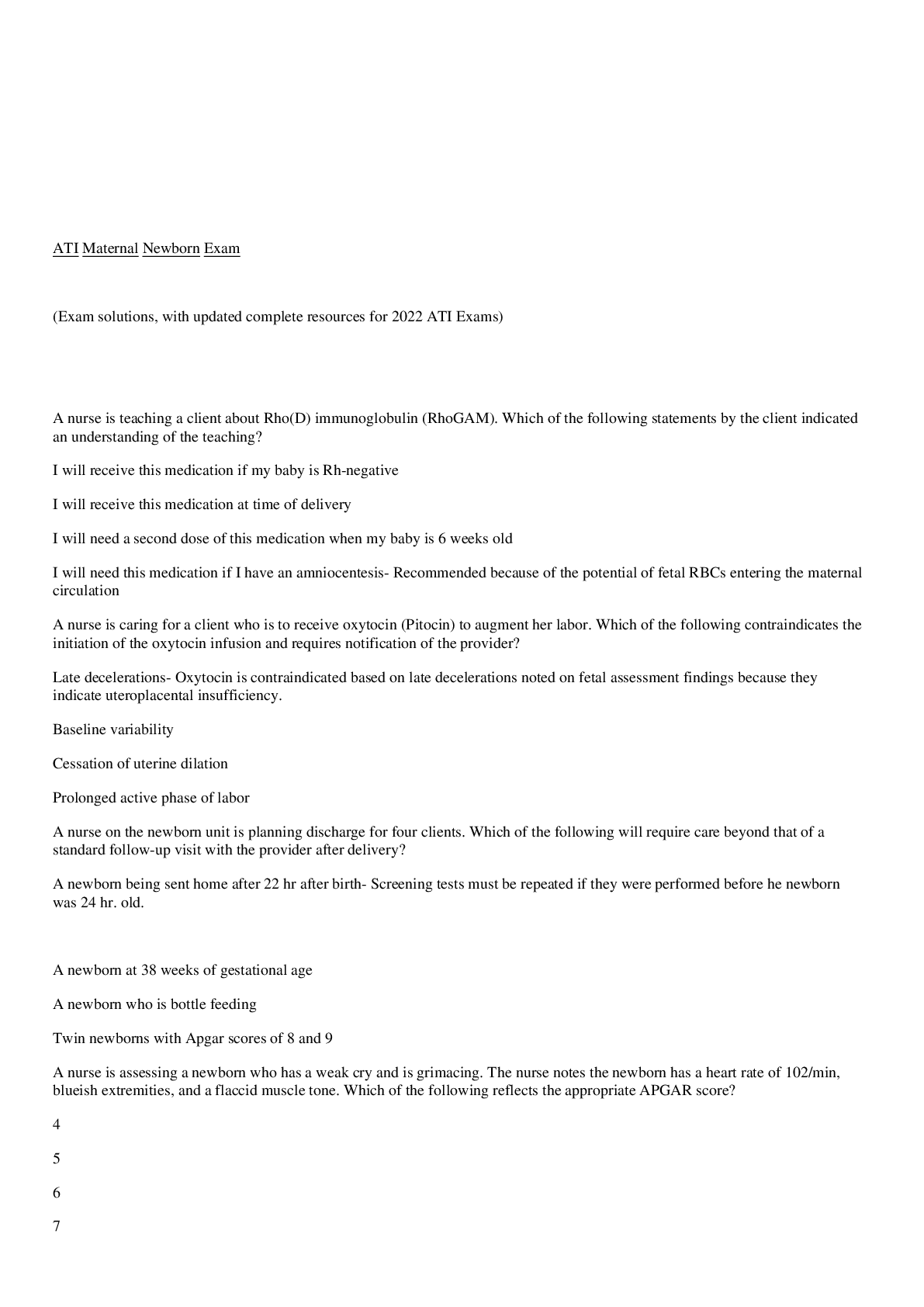
Buy this document to get the full access instantly
Instant Download Access after purchase
Buy NowInstant download
We Accept:

Reviews( 0 )
$10.00
Can't find what you want? Try our AI powered Search
Document information
Connected school, study & course
About the document
Uploaded On
Oct 19, 2022
Number of pages
6
Written in
Additional information
This document has been written for:
Uploaded
Oct 19, 2022
Downloads
0
Views
37

